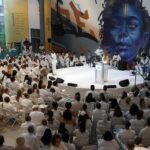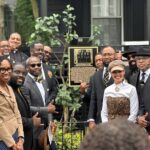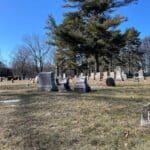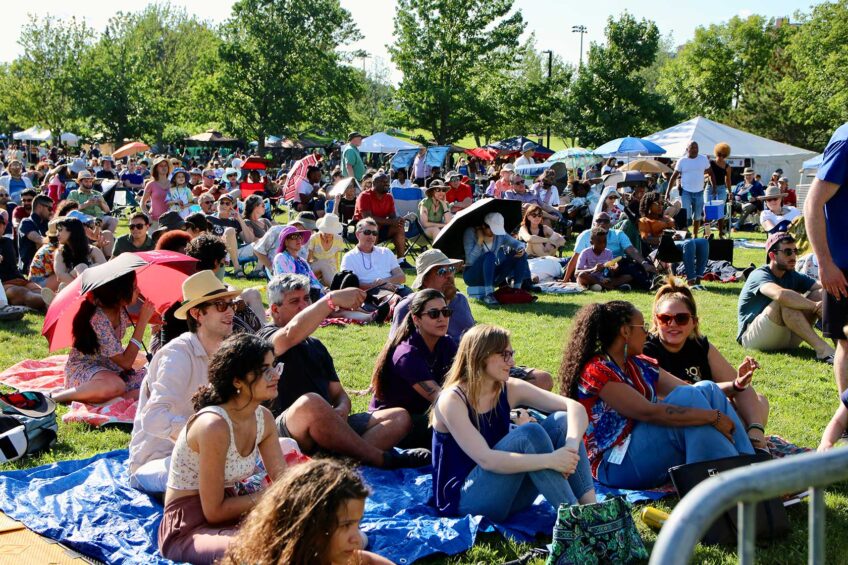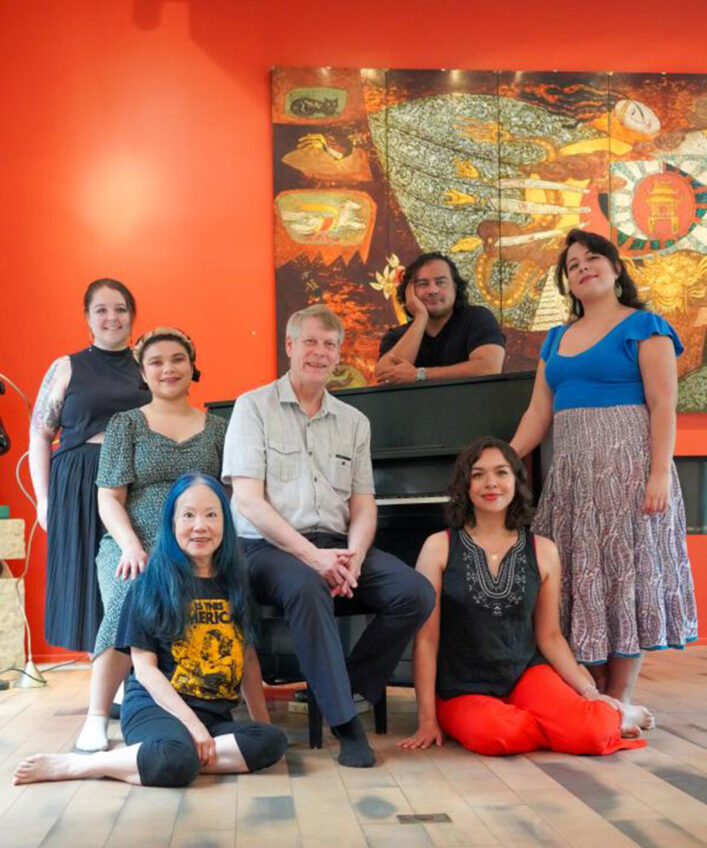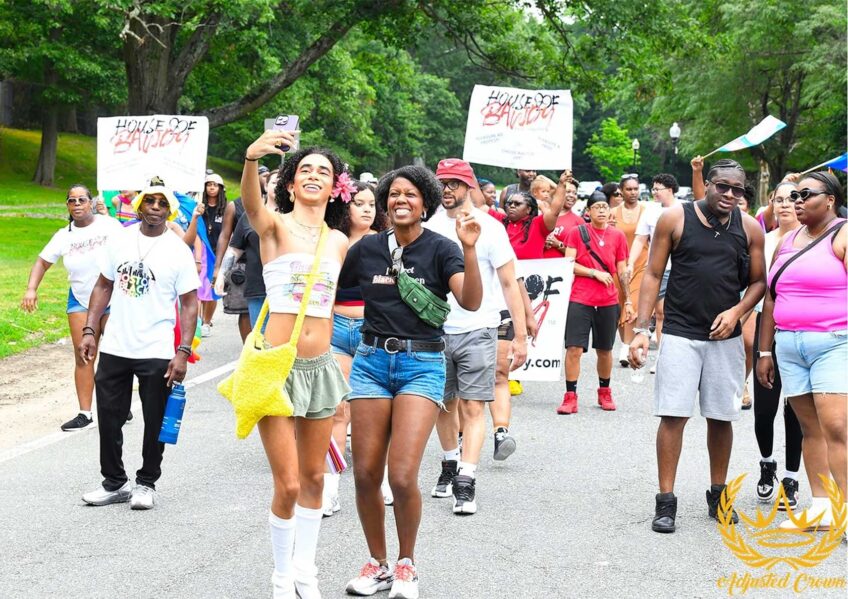
In the Piano Craft Gallery, tucked away in the lower level of a South End building, the legacy of writer and civil rights activist James Baldwin was on display this month. For two weeks, an assortment of bold artworks by more than 20 artists lined the walls for “Face It,” an exhibit commemorating Baldwin’s 100th year.
The show was the vision of Mary Harvey, founding director of Violence Transformed, an organization that centers art as a way of healing, evident in the intrepid portrayal of solemn subjects such as grief and death with vibrant hues, visceral textures and playful patterns.
Yvette Modestin, who also uses her Yoruba name, Lepolata Apoukissi, is interim creative director of Violence Transformed. She said the prevalence of violence in the world called for a therapeutic exhibit.

In L’Merchie Frazier’s artwork, yellow caution tape prompts viewers to ponder “the idea of stigma and labels.” PHOTO: ERIK GRAU
“So, the art that you see and in [Baldwin’s] words and how [the artists] interpret his words allows us to just get lost in something beautiful for a few minutes,” she said, “because then we have to walk out to the reality of today’s society.”
“Face It,” which was on view from Jan. 5 to 21, took its name from one of Baldwin’s notable quotes: “Not everything that is faced can be changed, but nothing can be changed until it is faced.” The exhibit description calls the quote a “60-year-old call to face our society’s reality.”
The Piano Craft Gallery is a volunteer-run nonprofit that prioritizes diversity and inclusivity in the arts. Erik Grau, the gallery’s president, said the show’s curators — Hakim Raquib, Colgan B. Johnson and Ellen Jacob — selected one artwork from each artist who applied.
Raquib said he and his colleagues asked themselves when selecting the art, “Does it move you? Does it speak to you?” He said he hoped visitors to the exhibit would heed Baldwin’s message and “keep [fighting] for equality and fighting for social justice here in America and around the world.”
The exhibit was replete with works expressing “similar ideas of oppression and power structures,” as Grau, who was responsible for the placement of the artwork, put it.
“What [is] really nice about this show is that you find [that] different artists who are tackling similar themes, their work has a conversation with each other,” he said.
He placed photographs of protests near works with gun violence and mental health themes, each seemingly distinct yet bonded by Baldwin as a throughline.
One piece, a portrait of Baldwin accompanied by the words “God Made My Face,” by Ron Wilhelmsen, hung next to “8 Minutes 46 Seconds,” a photograph by Annielly Camarg recreating George Floyd’s death.
Tanya Nixon-Silberg, an educator and first-time exhibiting artist, said she drew inspiration from Baldwin’s “A Talk to Teachers,” using part of the speech to highlight the inequities in educational curricula. Her earth-toned artwork included seed-and-stem embroidery stitches, pointing to her view of Baldwin as “a person who sowed a lot of seeds in revolution.”
For L’Merchie Frazier, an artist and activist, the exhibit was an opportunity to prompt viewers to ponder “the idea of stigma and labels, and those who have the power to keep you out.” Her works featured yellow caution tape pasted obstructively over portraits of her subjects.
“We’ve had over 500 years of Black and Indigenous history, that has not been the dominant narrative in America. That gives us another job to expand that narrative,” said Frazier, who is also Violence Transformed’s director of creative engagement. “And in the visual arts, we have a way of being able to discuss what might not be faced in written text. We have a way to visually activate people for this conversation.”


